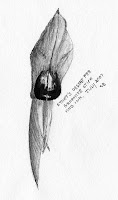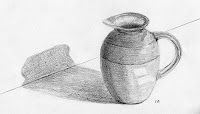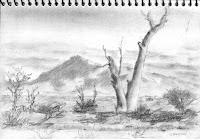 As some of you know
As some of you know I am working on an oil painting that is worked as a grisaille then glazes of transparent colour layered over the top. Because it is a landscape I am also introducing opaque colour as well with texture and the two seem to be work together; probably as the scene is water, smooth rock and native bush.
For those that wonder about the pronunciation of
grisaille it is
grizz-eye; French for grey.
The grisaille technique can be used in any colour that an artist wishes to choose although shades of grey or brown is more common. What you end up with is a monochromatic painting done entirely with a number of steps of values in one colour. This technique was common among the artists of the early Renaissance.
Using the grisaille technique the values are all worked out before any colour is added, not that hues are always introduced to the work. If you choose to go to the next step and add colour, the rest seems to take on a life of its own with changes happening very quickly because you don't have to concentrate quite so much on the values as they are already mapped out.
There are two artists at WetCanvas who's work I do admire. They are
William F. Martin and
Martin Clarke; both generously demonstrate there grisaille techniques on
WetCanvas.
Samples of William's work in progress:
Samples of Martin's work in progress:
I personally would like to study this grisaille technique in depth and if anyone has good links on this subject that they would like to share with me and my readers please leave them in the comments of this post. I have to admit I found searching the internet rather lacking when it comes to information on this subject.
Quick links:
 technorati tags: grisaille, grisaille technique, sketch, sketching, art, artist, draw, drawing, graphine
technorati tags: grisaille, grisaille technique, sketch, sketching, art, artist, draw, drawing, graphine
 I have always referred to this item as a stone jug. Maybe it is pottery but one thing I do know it is a great shape to draw and has been part of my kitchen for at least thirty years.
I have always referred to this item as a stone jug. Maybe it is pottery but one thing I do know it is a great shape to draw and has been part of my kitchen for at least thirty years.![]() technorati tags: sketch,
technorati tags: sketch, 











